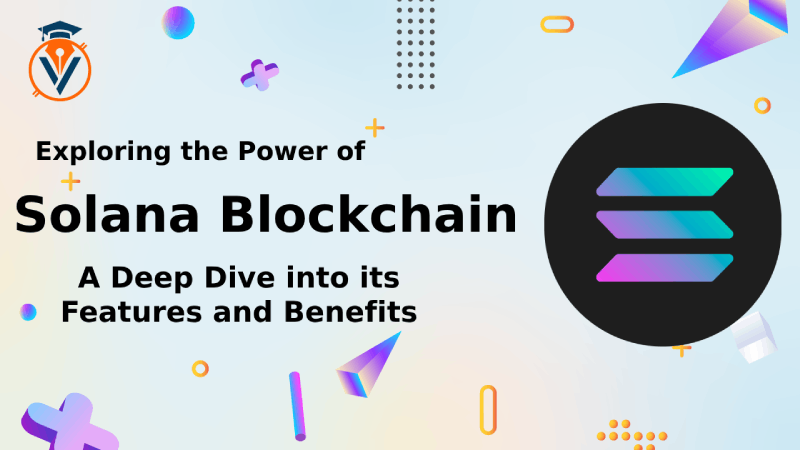Make money on DeFi
Of course, one may want to use DeFi for various reasons, but it is evident that the most attractive thing is the possibility of one becoming financially wealthy.
Decentralized financing for creating new "businesses" is like traditional financing for creating traders. Today, merchants have changed hats and run other equally profitable activities. However, this requires specific knowledge patience because the volatility of cryptocurrencies is well established.
There are entirely new skills and activities created on DeFi. Users worldwide are increasingly using decentralized annual yield (APY) services that are making traditional banking services shy.
What makes this world more interesting (other than earning money) is the fantastic flexibility and ease of using these services. Anyone can access it without giving out any personal information. Borderless banking is open to everyone. Regardless of budget, everyone will find what they are looking for it.
New ways of making money have appeared, and now the recent rush of gold is rocking our era.
The 4 ways to make money on DeFi
Method 1: Become a Farmer Who Practices Yield Farming
Farming on DeFi is the most surprising activity in DeFi. It is a (logical) continuity of liquidity mining. It is also why many people confuse these two types of operations.
When you mine liquidity, you receive liquidity tokens in exchange for your deposit.
Thus, while those who mine liquidity are looking first and foremost to recover commission costs, the farmers themselves are more interested in the LP tokens they receive.
LP tokens are for pools and represent the share that a person has deposited in the pool. They were created to give us a "receipt" for our deposit. Thus, by returning LP tokens, the smart contract of the liquidity aggregator returns our deposited funds + earned fees.
Very fast because the story is long, but the one who pushed this kind of activity is Composite and its symbol $COMP. People who compiled Compound earned $COMP for their efforts (e.g. reward points). Subsequently, this simple governance token experienced a rush in the secondary markets, and here the LP tokens were "hijacked" from their primary uses.
It is also why we talk about production agriculture. Cultivation refers to the idea of "growing" your new tokens, which are the ones you get from liquidity pools.
Thus, there are now "farms" where one can lock in LP tokens (to get other similar tokens or even other tokens.
When we are farming, in fact, very clearly, we are making the bets. To be more clear, tell yourself that farmers are the liquidity providers (liquidity providers) that collect LP tokens. That's it.
In agriculture, also we see higher APYs with four-digit sums sometimes. When they are perfect, you can imagine there is a problem.
We have to wonder if these protocols in question are viable in the long run.
Method 2: Lending and borrowing
It is the most well-known and oldest DeFi activity. Moreover, the first DeFi platforms mainly offered this type of service:
- cryptocurrency lending
- borrowing.
We can think of, for example, the pioneers in these areas, such as Compound Finance and Venera. It is a relatively simple protocol to understand. There are two types of users on these platforms: the lender and the borrower.
You can consider the lending and borrowing system of your bank. It's the same system, even if the underlying mechanism is different. There, a smart contract will take care of loans and borrowings. There is no middleman as there is with your bank. On DeFi, smart contracts directly link money deposited from lenders with the amount taken from borrowers. The absence of an intermediary allows DeFi to offer an interest much higher than that of traditional finance. There is no need for a banker, buildings, papers, manual contracts, etc. Everything is done automatically and with just a few clicks without any hindrance to entry. Anyone can lend or borrow if they have a decentralized wallet.
Whoever lends their assets to a platform will lock them in a smart contract. On the other hand, borrowers can access the assets deposited as a loan. They will pay the interest on the loan to the platform. Thus, the smart contract of the platform will distribute the interest to the lenders in proportion to the amount they have deposited.
Also, what distinguishes these platforms is not only the automatic management of loan and borrowing contracts. The guarantees are much stronger than in conventional finance is above all else.
Let's take a simple example. If you borrow money from your bank to buy real estate, it will ask you for a contribution (10%, for example) of the amount you will borrow in total. As collateral, the bank (if you cannot repay your loan) will seize the property. It is a guarantee that he will lend you money.
In Defi, the approach is different. A guarantee is necessary if we want to ensure the smooth running of the process as a whole. At DeFi, too, we want to reduce defaults. Instead of being asked for a guarantee on the future property, immediate confirmation is required. For example, if you're going to borrow 1,000 euros on Defi, you will be required to deposit the equivalent (and more) in cryptocurrencies for borrowing.
Borrowers use DeFi loans because if the price of cryptocurrencies goes up, they get back the money deposited (minus the interest paid) without selling.
Borrowing from DeFi can be very profitable for an experienced user. You have to know how to use your loan wisely, and it doesn't make sense to do this if you want to borrow (not make your loan work).
The people who make money this way are the lenders. It's more straightforward on the one hand because we don't need to make other guesses.
We only receive interest on our loan. Depending on the crypto platform, interest rates vary.
Interest rates vary daily. Double-check each platform before committing.
Take advantage of this type of service and do so on the Venera platform.
Method 3: Staking
Activity on DeFi is undoubtedly the most common and also the simplest. The user will deposit a certain amount of a particular code into a smart contract. It's like owning a neighbourhood X to take pictures of a traditional bank, except that the benefits there are way beyond the usual rates announced by the banks.
Your deposit will by itself bring in an additional return, usually from the same token you deposited.
The underlying mechanism is a catalyst created by the developers to keep the blockchain running smoothly. Betting is possible by implementing a consensus mechanism of the "Proof of Stake" type.
There are different types of blockchain consensus mechanisms. It depends on the method of operation and reward in the blockchain. It is called "consensus" because all operators agree to operate in the same way. The most well-known consensus mechanisms are Proof of Stake and Proof of Work algorithms.
Thus, to give you a brief reminder, the blockchain, by its decentralized operation, consists of many computers that make the network "transform". We often have the image of bitcoin miners being rewarded for their work with bitcoins. Well, for blockchains that have a consensus mechanism of the Proof of Work type, the rewards are for those who "stack" tokens. It is how the network can function and that there are enough incentives to validate and secure the operations that have taken place on the respective blockchain. If you're wondering where that money comes from, tell yourself that transaction fees are often already paid to those who hoard it.
In general, the higher the amount deposited and the longer the holding time, the higher the bonus.
Many blockchains are turning to Proof of Stake due to the overruns in Proof of Work-type consensus mechanisms. So there are a lot of options for installation.
Even DEXs or protocols offer this option like Veneraswap. Exchanges like Venera wallet also offer stark options for some cryptocurrencies.
Method 4: Become a liquidity provider
There, we begin to introduce the most difficult methods. These methods can bring the most significant return but also turn out to be the most "risky". Becoming a liquidity provider is also called doing liquidity mining.
It was DEXs that popularized this activity on DeFi. Decentralized exchanges are the equivalent of trading platforms on CeFi. These are called automated market maker (AMM) or market maker protocols.
We won't go into details here, but other forms of DEX work on different AMMs. Each AMM follows its formulas and algorithms. We will talk about it in a dedicated article.
There is no order book but instead liquidity. Liquidity pools consist of pairs of tokens (of the same value). Thus, in a liquidity pool of 1,000 euros of ETH/USDT, we will find 500 euros of ETH and 500 euros of USDT. Thanks to these pools, users can exchange tokens between them without an intermediary.
So, again, we had to find incentives for people to deposit cash. Then we again receive a percentage of the commission fee on DEX. When you trade on a decentralized platform, you also pay a fee. These fees are then redistributed in proportion to the deposit in the pool.
Naturally, the more trades there are in the pool, the more profitable the liquidity providers will be.
Thus, you automatically receive liquidity provider tokens (LP tokens) when you become a liquidity provider. We accept it in proportion to our contribution to the total. Thus, the LP tokens we receive are the "proof" that we have deposited them into the pool. To get our bet back, we return our LP tokens.
We talked to you about the risks of becoming a liquidity provider due to the volatility of token prices. The best-known risk is the so-called 'non-permanent loss'. To sum it up quickly, tell yourself that this is when the pair becomes completely unbalanced and does not match the market price.
The more significant the difference in the token price during the deposit from the difference offered in the markets, the more one will be exposed to non-permanent losses.
Conclusion
Now that you better understand the basic mechanics of making money, you can dive into the Veneraswap platform. With the methods we just saw, everyone can take advantage of them and eventually make money.
With Veneraswap earning money has never been easy, accessible and open to everyone!


